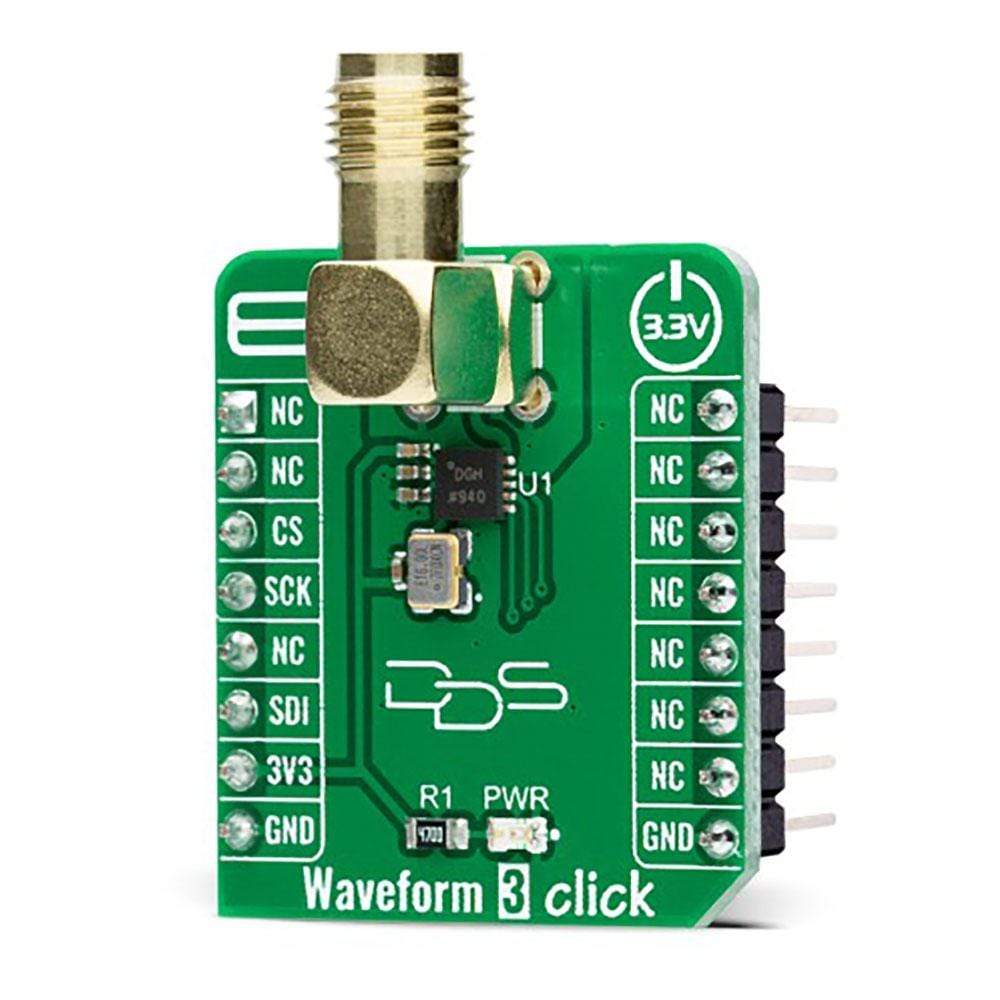
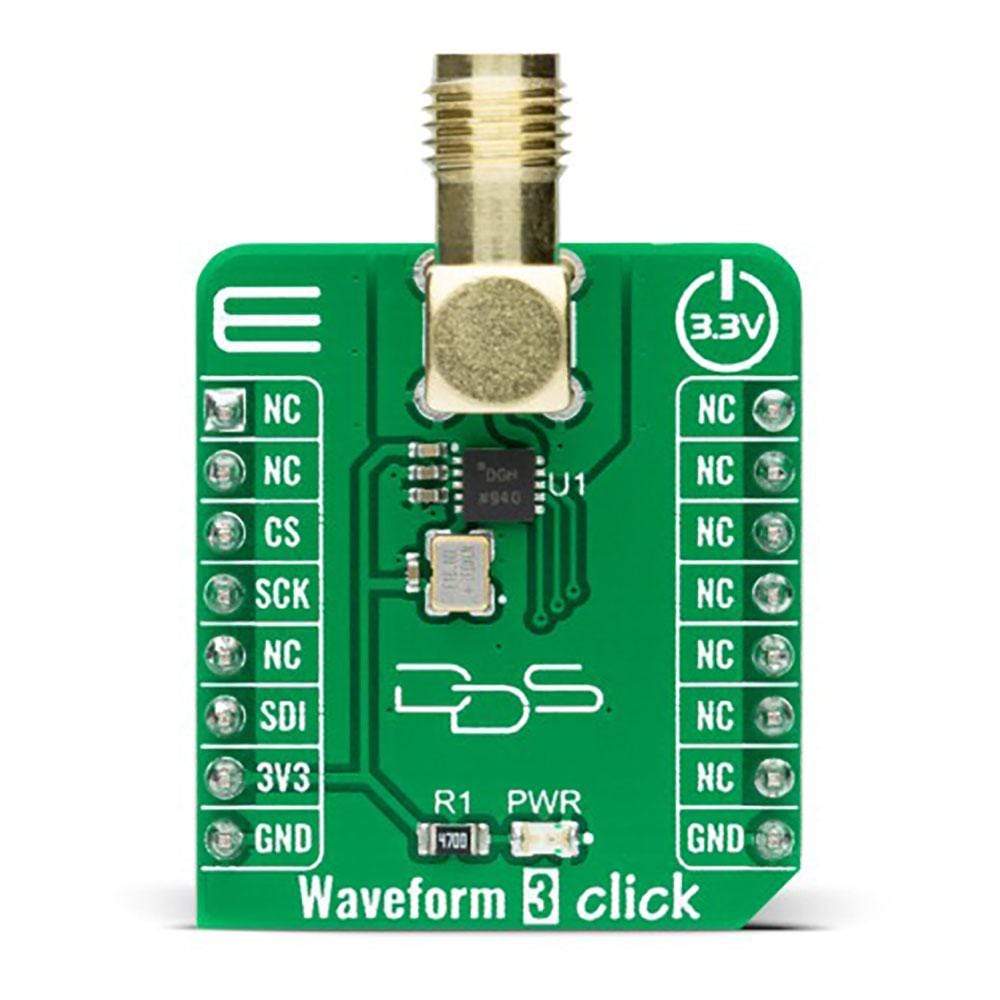
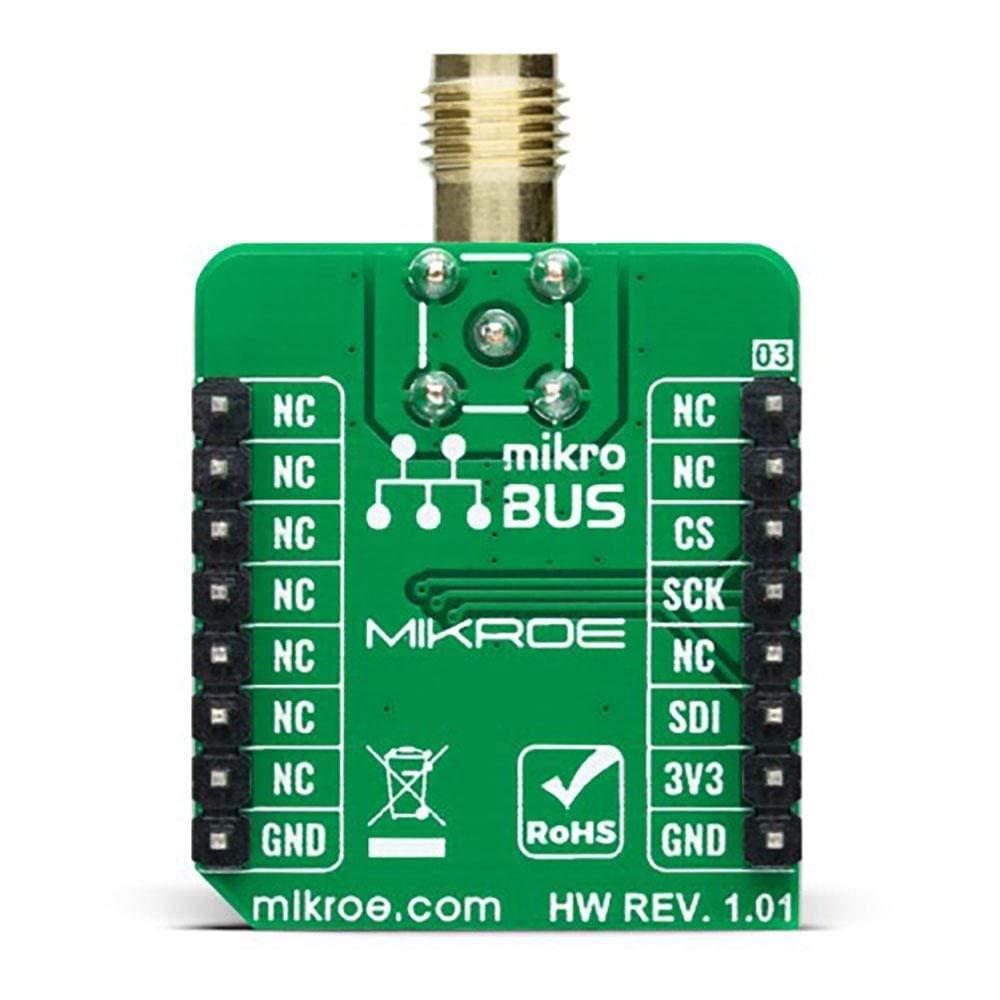
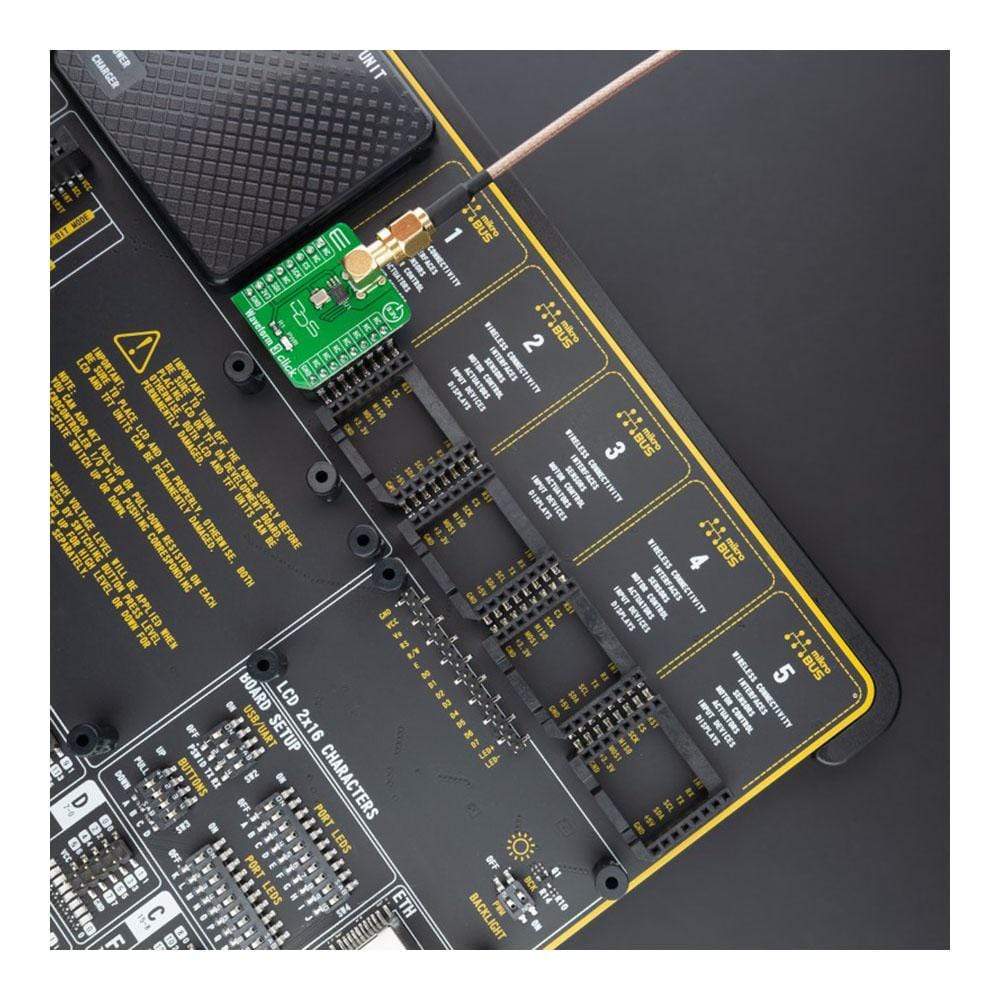
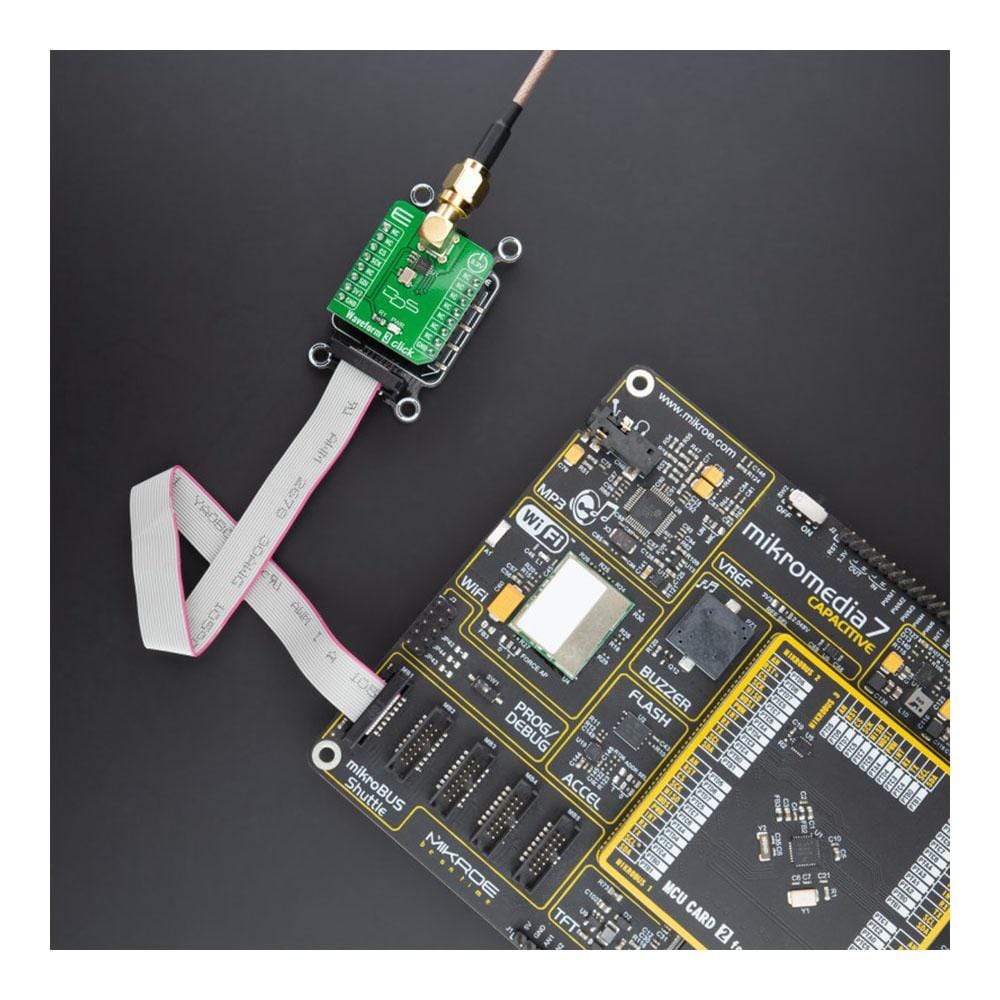

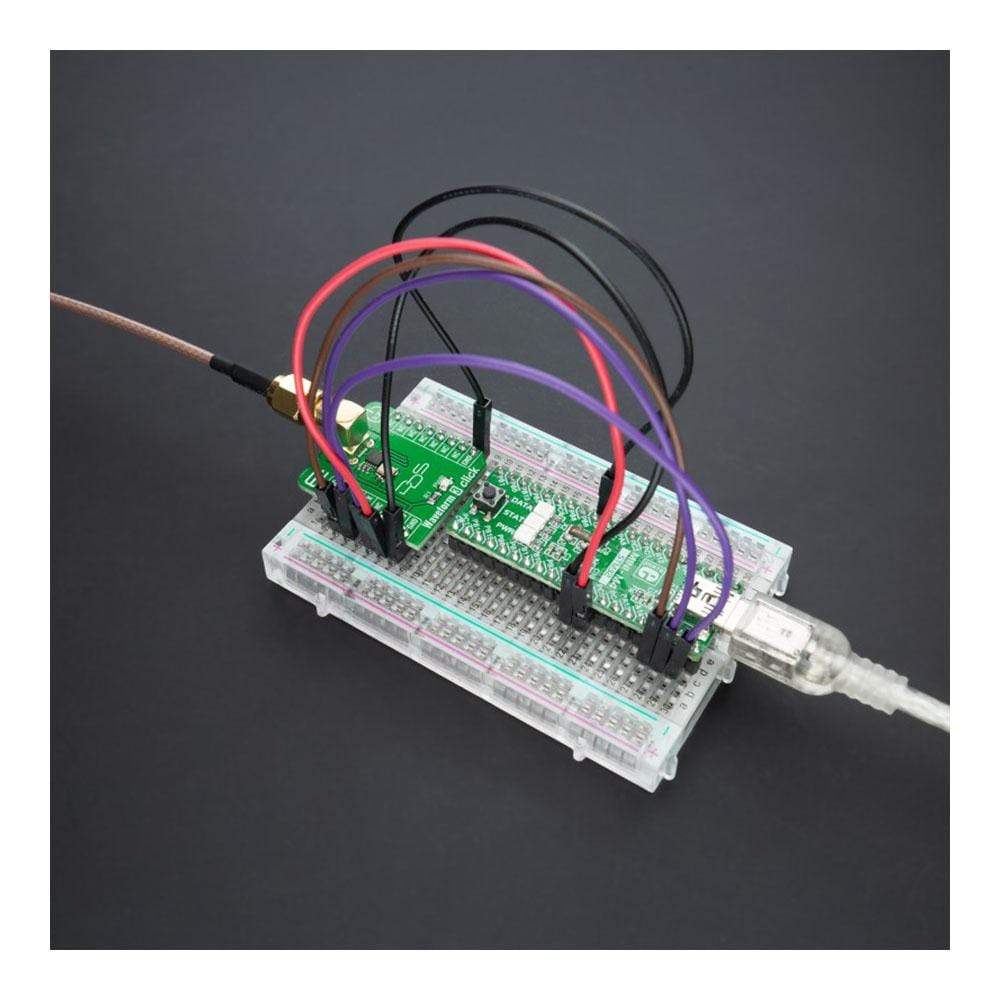
Overview
The Waveform 3 Click Board™ is a compact add-on board representing a high-performance signal generator. This board features the AD9837, a low-power programmable waveform generator capable of producing sine, triangular, and square wave outputs from Analog Devices. This direct digital synthesizer creates arbitrary analogue waveforms from a fixed-frequency reference clock. It has software programmable output frequency and phase via a 3-wire SPI serial interface and is compatible with DSP standards. This Click Board™ is suitable for waveform generation required in various sensing, actuation, and time domain reflectometry (TDR) applications.
The Waveform 3 Click Board™ is supported by a mikroSDK compliant library, which includes functions that simplify software development. This Click Board™ comes as a fully tested product, ready to be used on a system equipped with the mikroBUS™ socket.
Downloads
Der Waveform 3 Click Board™ ist eine kompakte Zusatzplatine, die einen Hochleistungssignalgenerator darstellt. Diese Platine verfügt über den AD9837, einen programmierbaren Wellenformgenerator mit geringem Stromverbrauch, der Sinus-, Dreieck- und Rechteckwellenausgänge von Analog Devices erzeugen kann. Dieser direkte digitale Synthesizer erzeugt beliebige analoge Wellenformen aus einem Referenztakt mit fester Frequenz. Er verfügt über eine softwareprogrammierbare Ausgangsfrequenz und -phase über eine 3-adrige SPI-Seriellschnittstelle und ist mit DSP-Standards kompatibel. Dieses Click Board™ eignet sich für die Wellenformerzeugung, die in verschiedenen Sensor-, Betätigungs- und Zeitbereichsreflektometrie-Anwendungen (TDR) erforderlich ist.
Das Waveform 3 Click Board™ wird durch eine mikroSDK-kompatible Bibliothek unterstützt, die Funktionen enthält, die die Softwareentwicklung vereinfachen. Dieses Click Board™ wird als vollständig getestetes Produkt geliefert und ist bereit für den Einsatz auf einem System, das mit der mikroBUS™-Buchse ausgestattet ist.
| General Information | |
|---|---|
Part Number (SKU) |
MIKROE-4432
|
Manufacturer |
|
| Physical and Mechanical | |
Weight |
0.03 kg
|
| Other | |
Country of Origin |
|
HS Code Customs Tariff code
|
|
EAN |
8606027382123
|
Warranty |
|
Frequently Asked Questions
Have a Question?
Be the first to ask a question about this.







